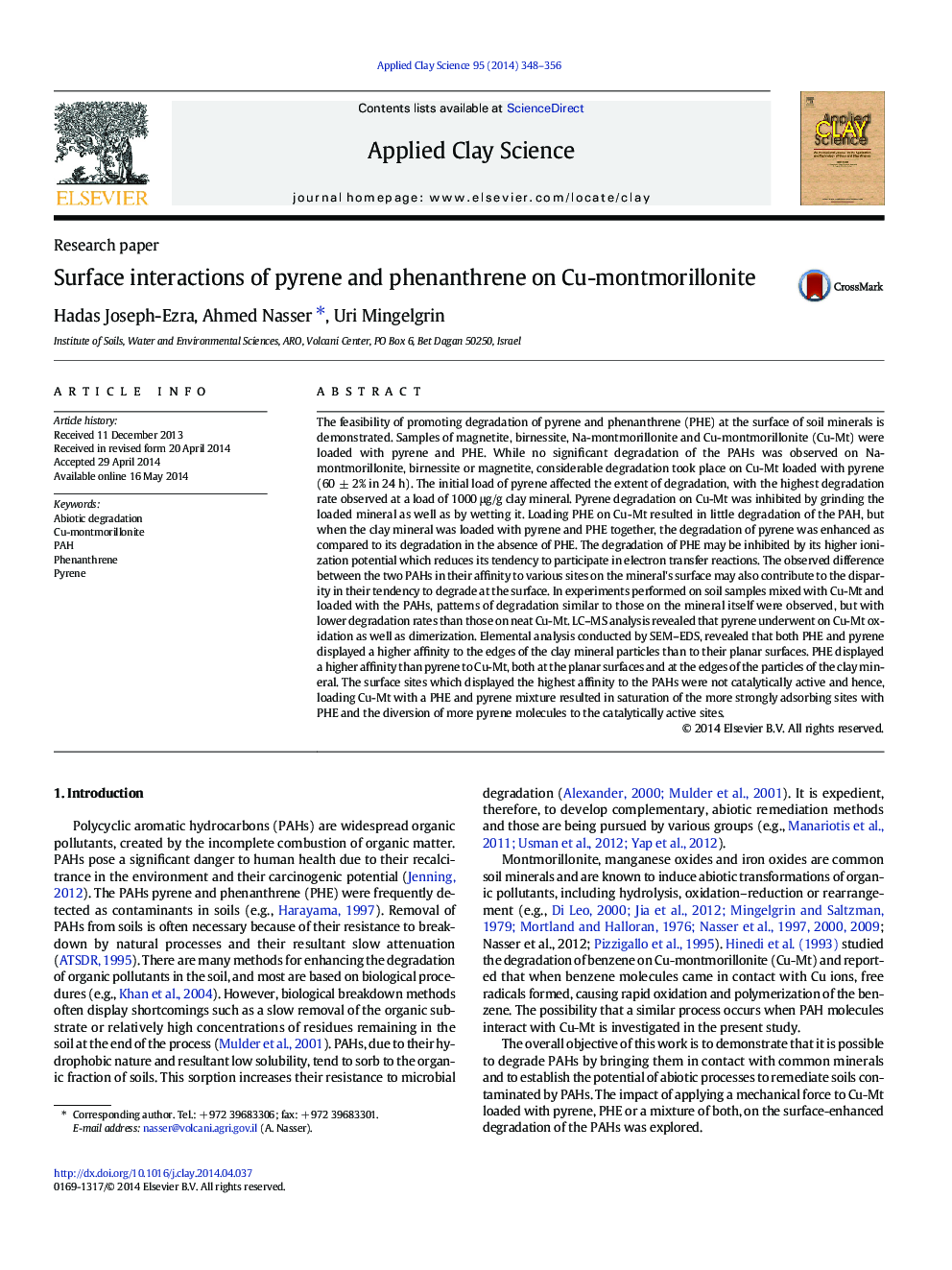| کد مقاله | کد نشریه | سال انتشار | مقاله انگلیسی | نسخه تمام متن |
|---|---|---|---|---|
| 1694827 | 1519082 | 2014 | 9 صفحه PDF | دانلود رایگان |

• Cu-Mt enhances the abiotic degradation of pyrene more than PHE.
• Degradation of pyrene on Cu-Mt is a relatively fast surface reaction.
• The presence of PHE augments the degradation of pyrene on Cu-Mt.
• PHE adsorbs on surface sites on Cu-Mt which do not enhance degradation.
• Oxidation and dimerization are the degradation pathways for pyrene on Cu-Mt.
The feasibility of promoting degradation of pyrene and phenanthrene (PHE) at the surface of soil minerals is demonstrated. Samples of magnetite, birnessite, Na-montmorillonite and Cu-montmorillonite (Cu-Mt) were loaded with pyrene and PHE. While no significant degradation of the PAHs was observed on Na-montmorillonite, birnessite or magnetite, considerable degradation took place on Cu-Mt loaded with pyrene (60 ± 2% in 24 h). The initial load of pyrene affected the extent of degradation, with the highest degradation rate observed at a load of 1000 μg/g clay mineral. Pyrene degradation on Cu-Mt was inhibited by grinding the loaded mineral as well as by wetting it. Loading PHE on Cu-Mt resulted in little degradation of the PAH, but when the clay mineral was loaded with pyrene and PHE together, the degradation of pyrene was enhanced as compared to its degradation in the absence of PHE. The degradation of PHE may be inhibited by its higher ionization potential which reduces its tendency to participate in electron transfer reactions. The observed difference between the two PAHs in their affinity to various sites on the mineral's surface may also contribute to the disparity in their tendency to degrade at the surface. In experiments performed on soil samples mixed with Cu-Mt and loaded with the PAHs, patterns of degradation similar to those on the mineral itself were observed, but with lower degradation rates than those on neat Cu-Mt. LC–MS analysis revealed that pyrene underwent on Cu-Mt oxidation as well as dimerization. Elemental analysis conducted by SEM–EDS, revealed that both PHE and pyrene displayed a higher affinity to the edges of the clay mineral particles than to their planar surfaces. PHE displayed a higher affinity than pyrene to Cu-Mt, both at the planar surfaces and at the edges of the particles of the clay mineral. The surface sites which displayed the highest affinity to the PAHs were not catalytically active and hence, loading Cu-Mt with a PHE and pyrene mixture resulted in saturation of the more strongly adsorbing sites with PHE and the diversion of more pyrene molecules to the catalytically active sites.
Journal: Applied Clay Science - Volume 95, June 2014, Pages 348–356